Electron Energy in Nanoheterostructure, Including Unmagnetic and Magnetic Layers ()
1. Introduction
Quantum heterostructures containing layers of diluted magnetic semiconductors (Mn, Fe) are studied extensively in literature both fundamentally and practically as materials designed for spin-electronic devices. In this communication, we report about the one-particle electron spectrum investigation in nanoheterostructure
Zn0.943Be0.057Se-ZnSe-Zn0.943Be0.057Se-Zn0.9Be0.05Mn0.05Se. Its photoluminescence spectra were obtained in [1-3]. The magnetic field effect on photoluminescence spectra generally includes two components: effect on one-particle spectra and particularly produced by its effect on exchange interaction between current carries and 3d element ions. We investigated the one-particle spectra effect by magnetic field, which developed the exchange potential barrier U1 (correspondent to layer Zn0.9Be0.05Mn0.05Se) due to Zeeman effect. Energy splitting consequence to magnetic field produces levels with increasing and decreasing energies (due to negative mj). For such levels, the energy of electron ground state was investigated.
2. Analytical Expressions
We investigate the ground state energy of electrons in a structure, formed by quantum well corresponding to layer ZnSe and asymmetrical potential barriers, produced by layeres ZnBeMnSe and ZnBeSe, as it is are shown in Figure 1.
The bounded state energy can be fined from the solution of stationary Schredinger equation, with the potential:
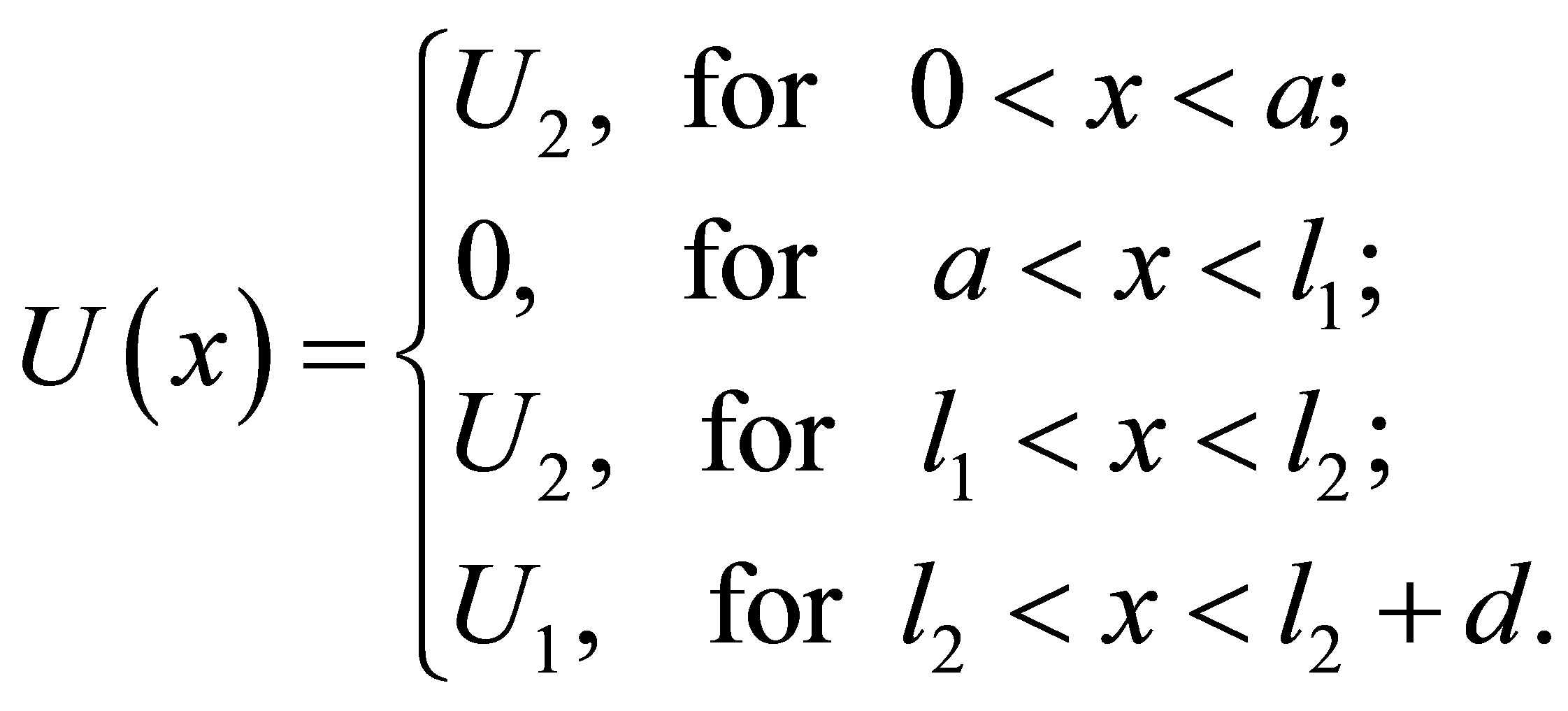 (1)
(1)
The eigenfunctions of (1) are:
 (2)
(2)

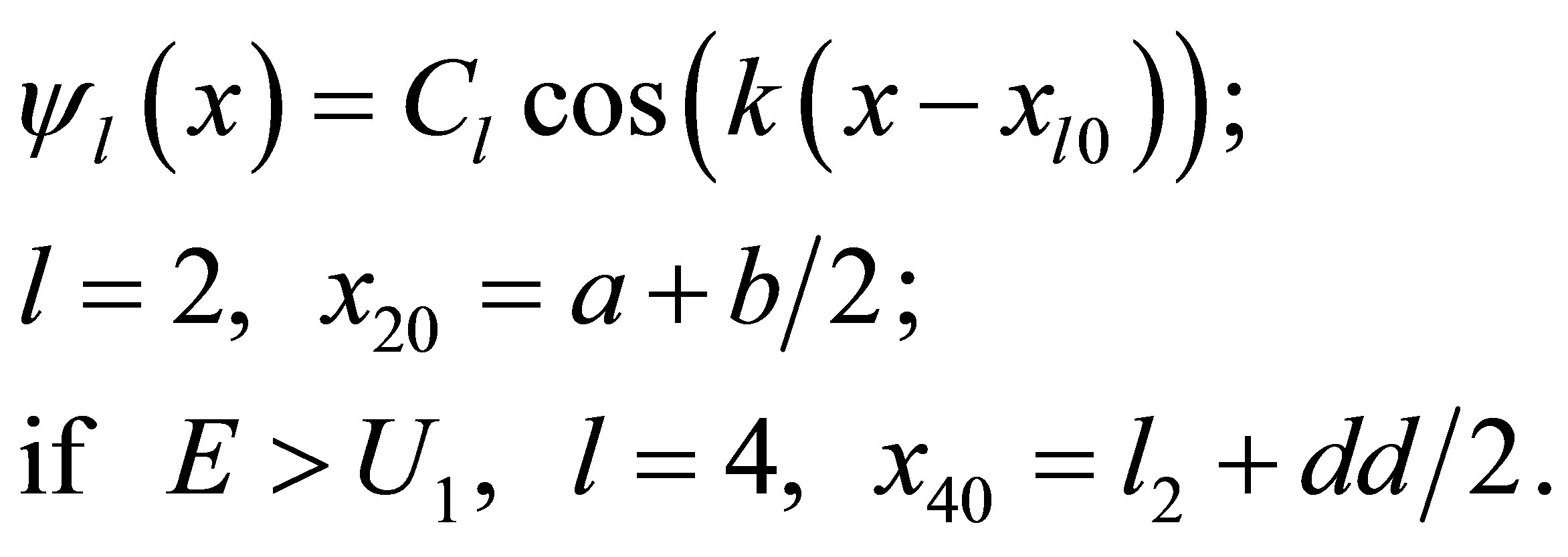 (3)
(3)
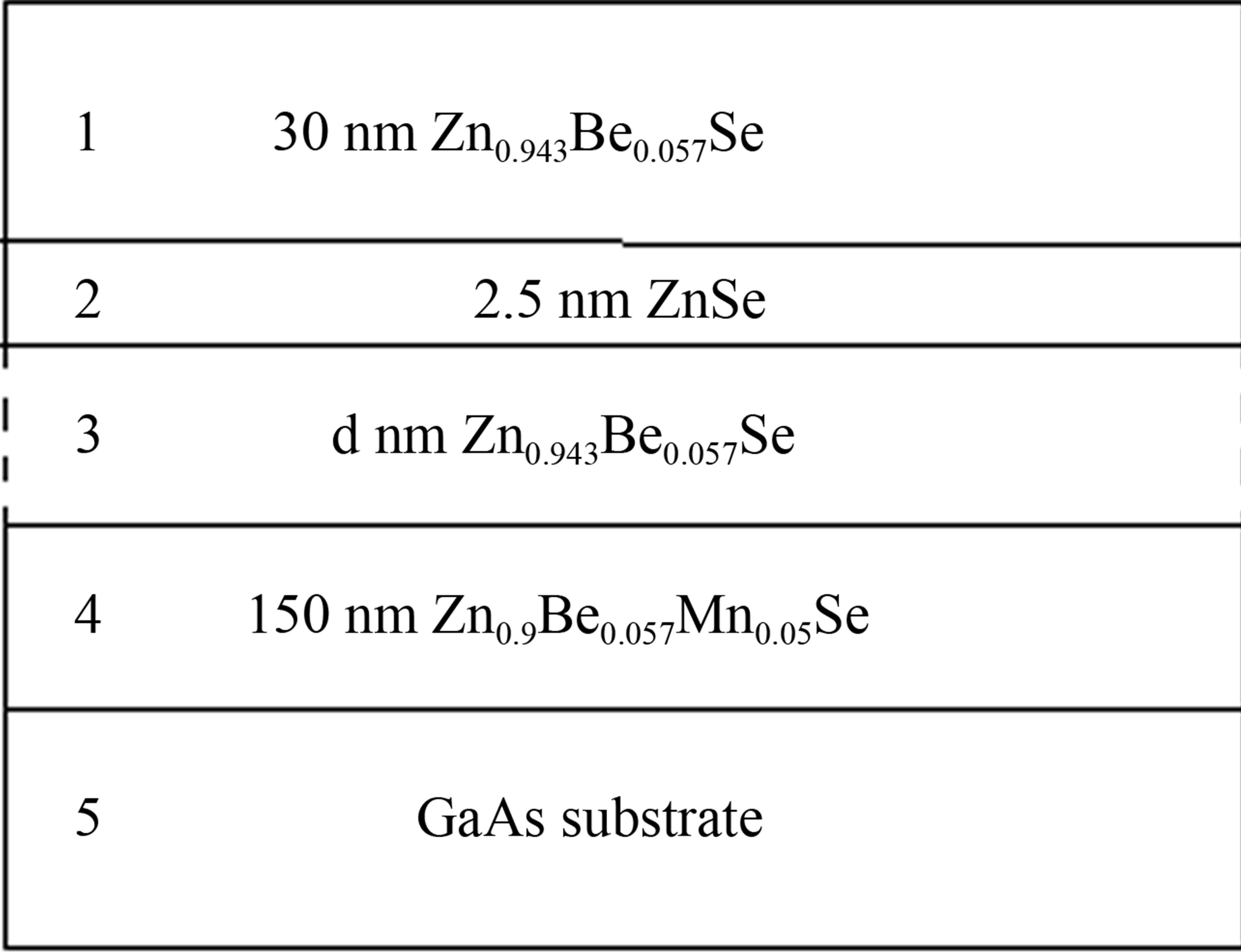 (a)
(a)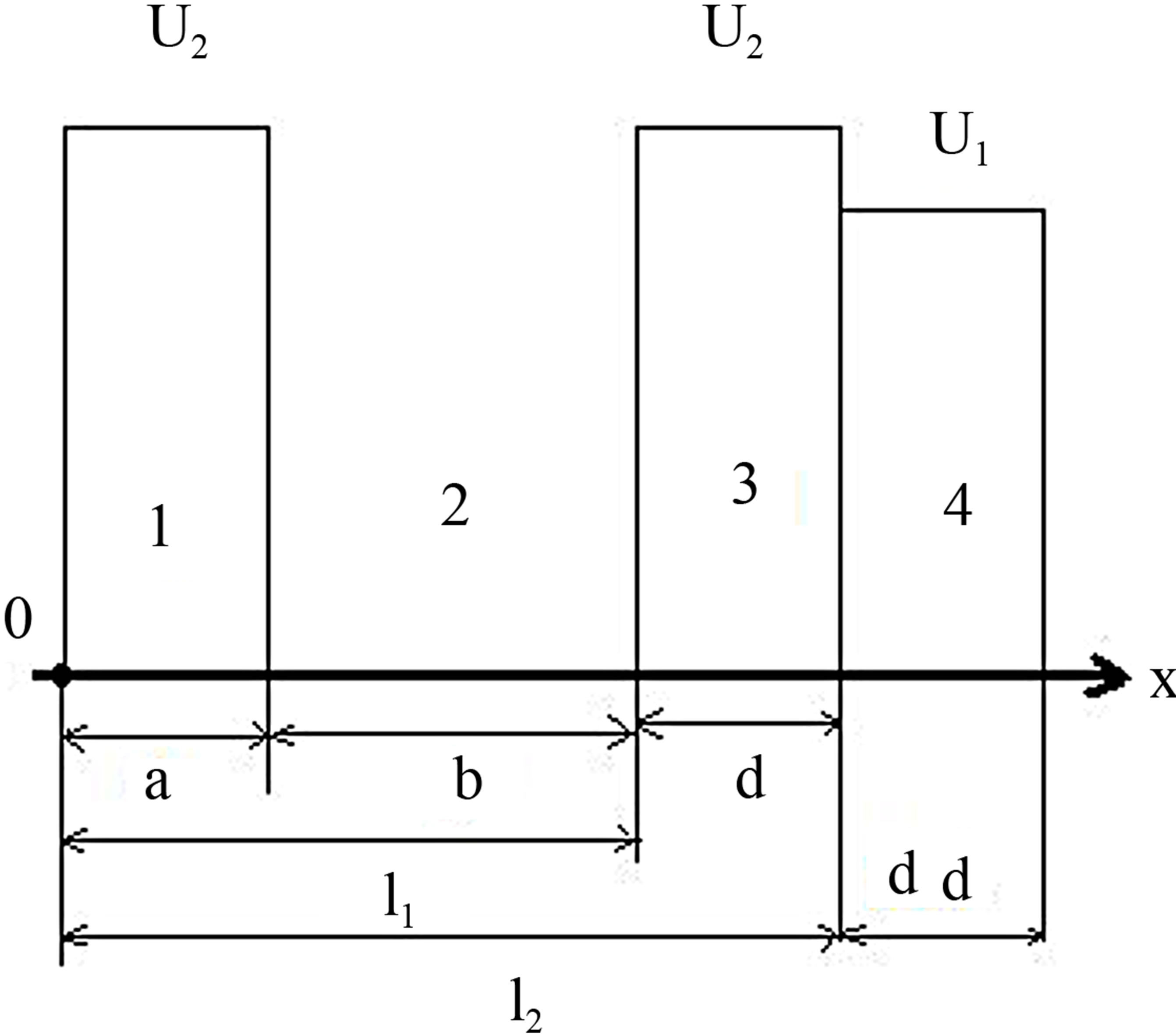 (b)
(b)
Figure 1. Nanoheterostructure, investigated in [1-3] (a) and its representation in space-energy diagram (b).
The finite properties of wave-function and an essential width of the layer 4 (Figure 1(a)) determine C41 = 0 in (2). The solution (3) was received with consideration that the wave function of the ground state of the particles does not have any knot inside the interval. Infinity of wave function and its derivation [7] determine the system of linear equations. Quasimimentum k and energy E(k) are found while the determinant of the system of linear equations compared to zero. Considering two analytical solution for layer 4, we get for 
For 
Calculations were carried out for effective mass me = 0.2 m0 and U2 = 36 meV.
3. The Ground State Energy of Electron and Its Dependence on External Magnetic Field
Determinants (4) and (5) are represented in Figures 2 and 3, where j determines a change of 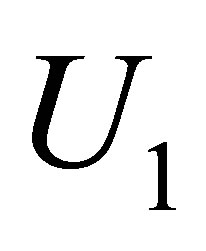 (increasing j results the increasing of the external magnetic field and decreasing of
(increasing j results the increasing of the external magnetic field and decreasing of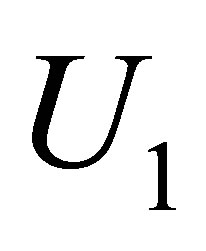 , while
, while 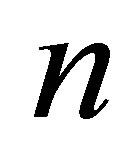 -numbers the step for
-numbers the step for ).
).
As it follows from Figure 2(a)" target="_self">Figure 2(a), the solution of (4) requires separate consideration in area of . Figure 2(b)" target="_self">Figure 2(b) shows that for some j the solutions of
. Figure 2(b)" target="_self">Figure 2(b) shows that for some j the solutions of 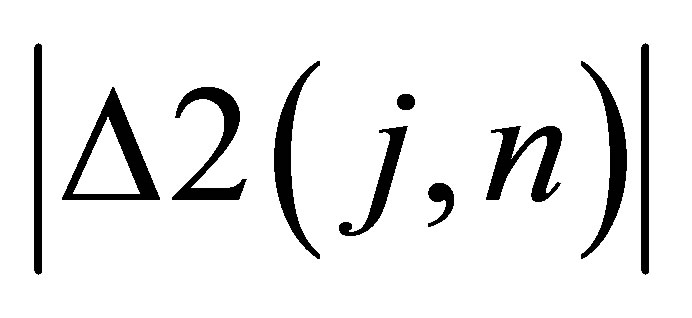 must be considered: for example we see that
must be considered: for example we see that  does not have any solution. Figure 3 represents
does not have any solution. Figure 3 represents 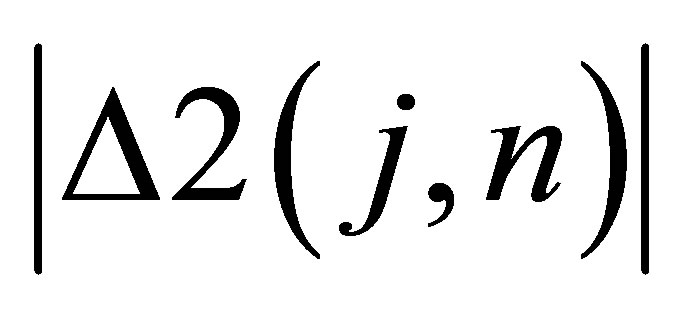 for the different n at j = 1, 50, 99. As it follows from Figure 3,
for the different n at j = 1, 50, 99. As it follows from Figure 3, 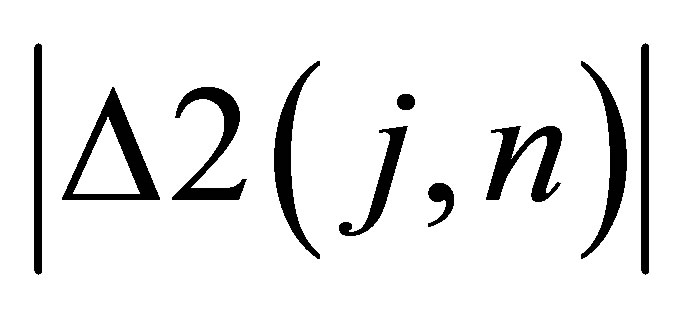 represents the wave with decaying amplitude while j increases
represents the wave with decaying amplitude while j increases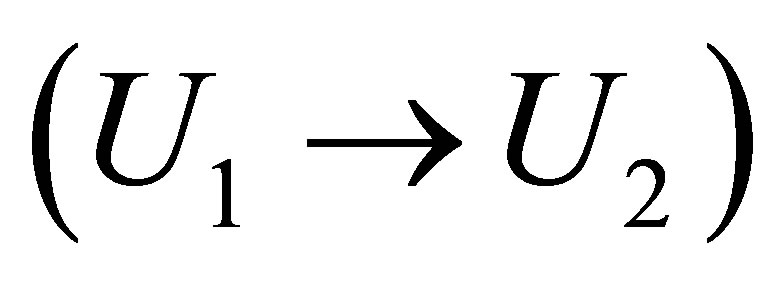 . Figure 4 shows the energy of ground level as a function of
. Figure 4 shows the energy of ground level as a function of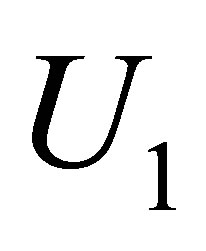 , changing in magnetic field due to Zeeman effect, for different width of nonmagnetic layer. Figure 5 includes these levels in area of their non monotony dependences. In Figure 5, we see experimentally received magnetic field dependence of the energy positions of Lorentz components from [1-3].
, changing in magnetic field due to Zeeman effect, for different width of nonmagnetic layer. Figure 5 includes these levels in area of their non monotony dependences. In Figure 5, we see experimentally received magnetic field dependence of the energy positions of Lorentz components from [1-3].
4. Conclusions
As can be seen from Figure 4, for any width of unmagnetic layer increasing of magnetic-field (decreasing of U1), results are the decreasing of electron ground-state energy. For the large fields, such reduction does not depend on the unmagnetic layer width. For small fields, we obtain the area horizontal lines in Figures 4(a) and (b) and 5, where the energy of the level does not depend on the field. This area is increasing while unmagnetic layer width is increasing. The thickness of unmagnetic layer is noticeable on level energy at the small fields, while unmonotonic dependence of energy takes place. These areas are increasing with unmagnetic layer width decreasing.
 (4)
(4)
 (5)
(5)
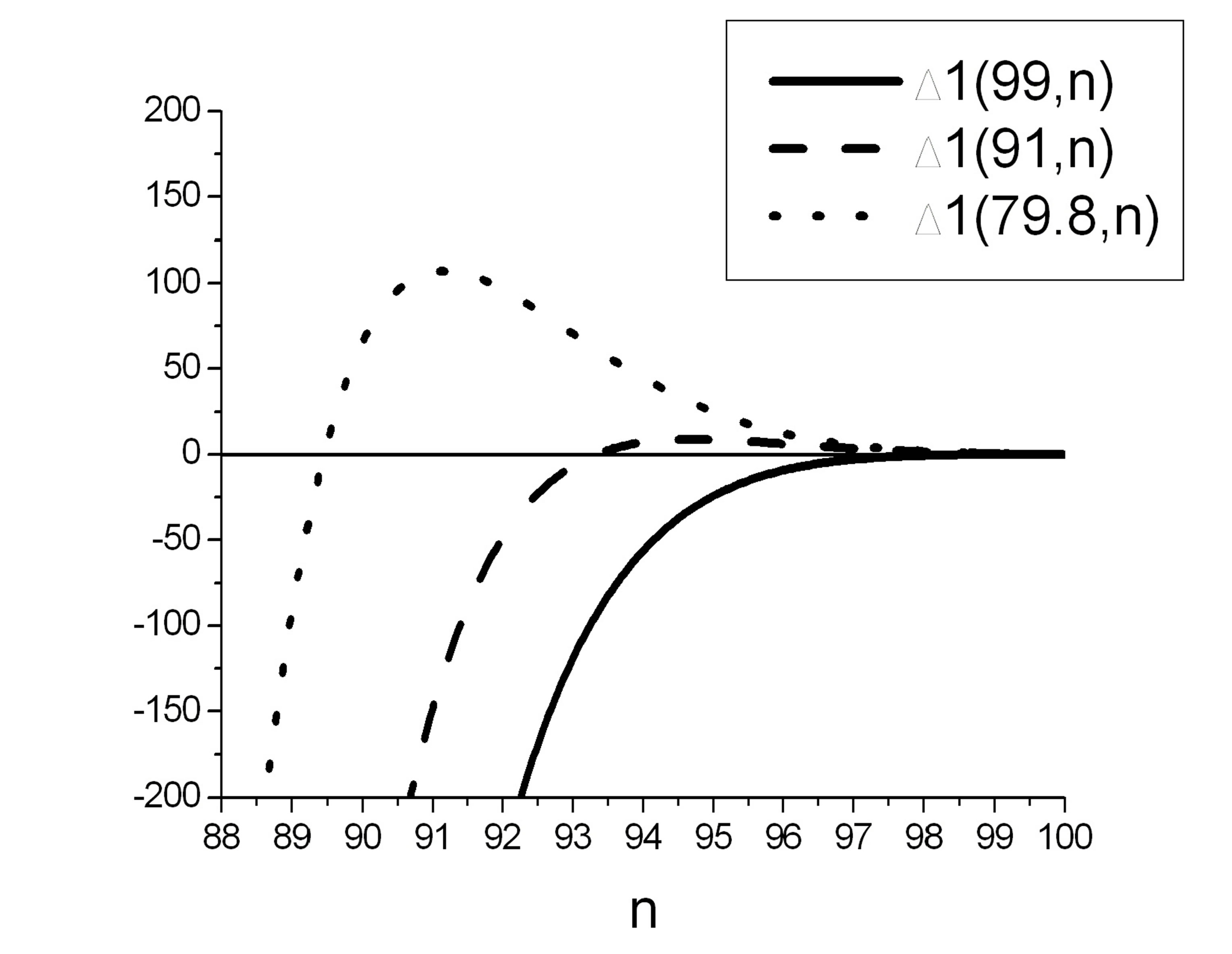 (a)
(a)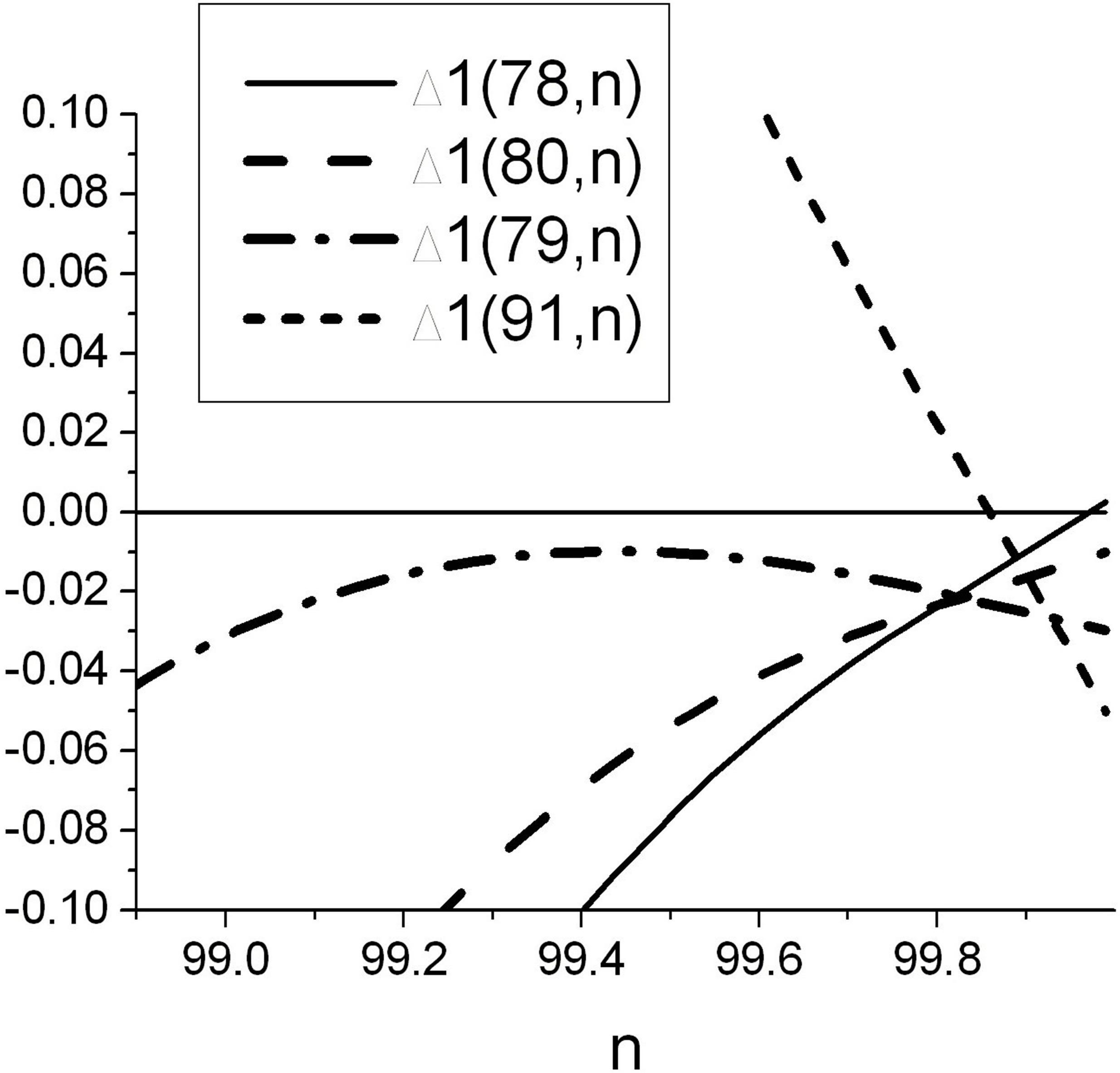 (b)
(b)
Figure 2. Determinant 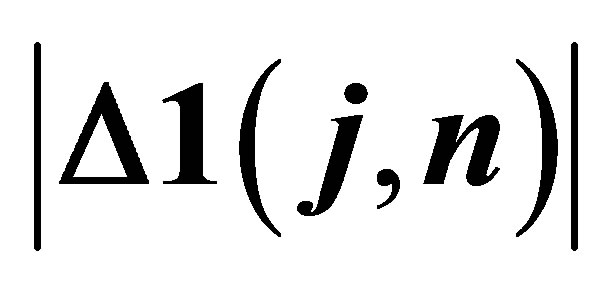 for different j (a) 88 < n < 100; (b) 88 < n < 100.
for different j (a) 88 < n < 100; (b) 88 < n < 100.
Compare the received results with experimental data for luminescence spectra in [1-3], then, we see the mismatching of numerical results. It can be explained as in this paper we report about the ground state energy of electrons, while in experiment the energy gap (includes holes energy) is investigated. Besides, the exchange energy (3d-electrons of magnetic layer and current carries) is important for such structures. Such energy was not considered in this work.
Nevertheless, some peculiarities in experiment data can
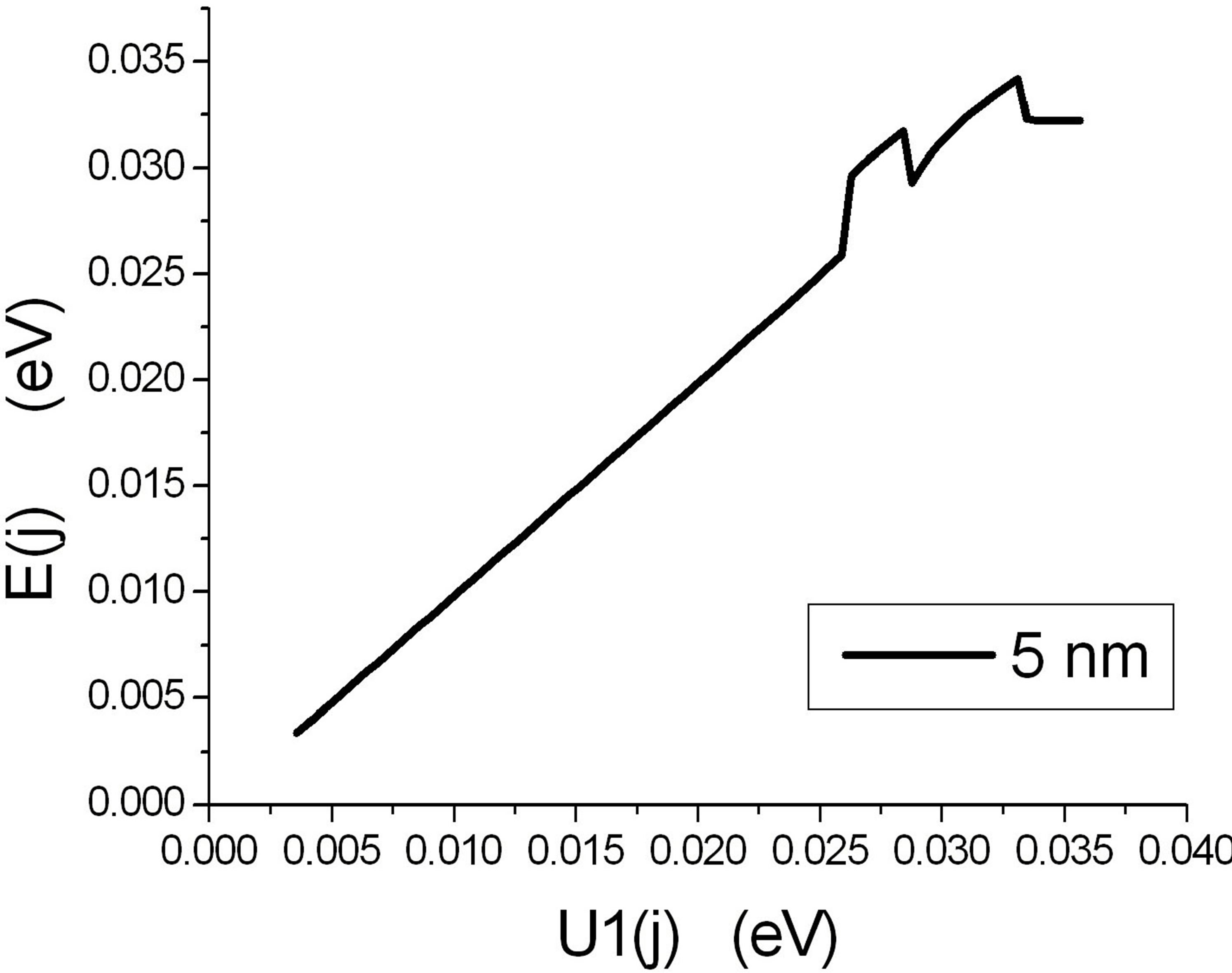 (a)
(a)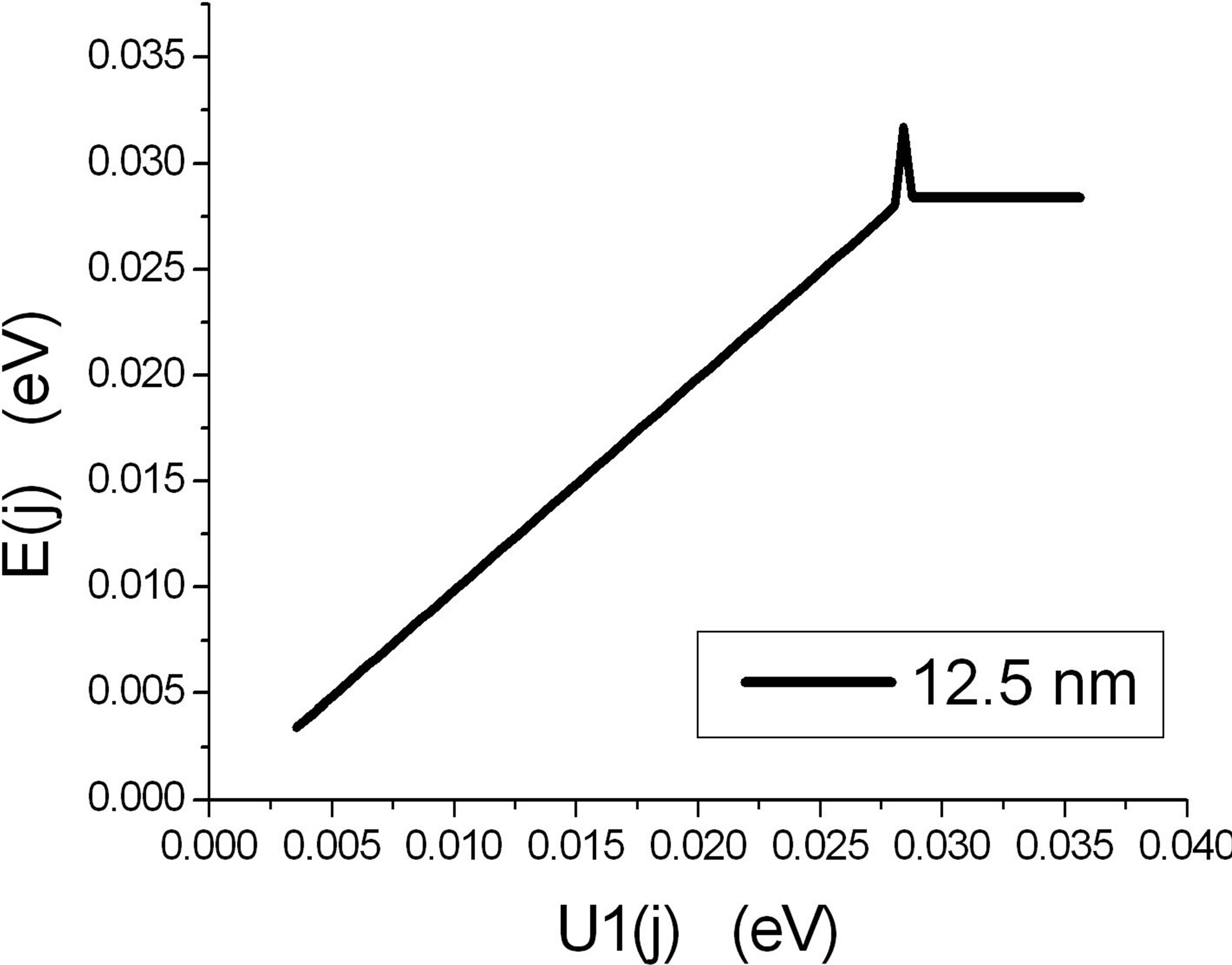 (b)
(b)
Figure 4. Ground state energy of electron as a function of potential U1, changing in magnetic field because of Zeeman effect for different width of unmagnetic layer.
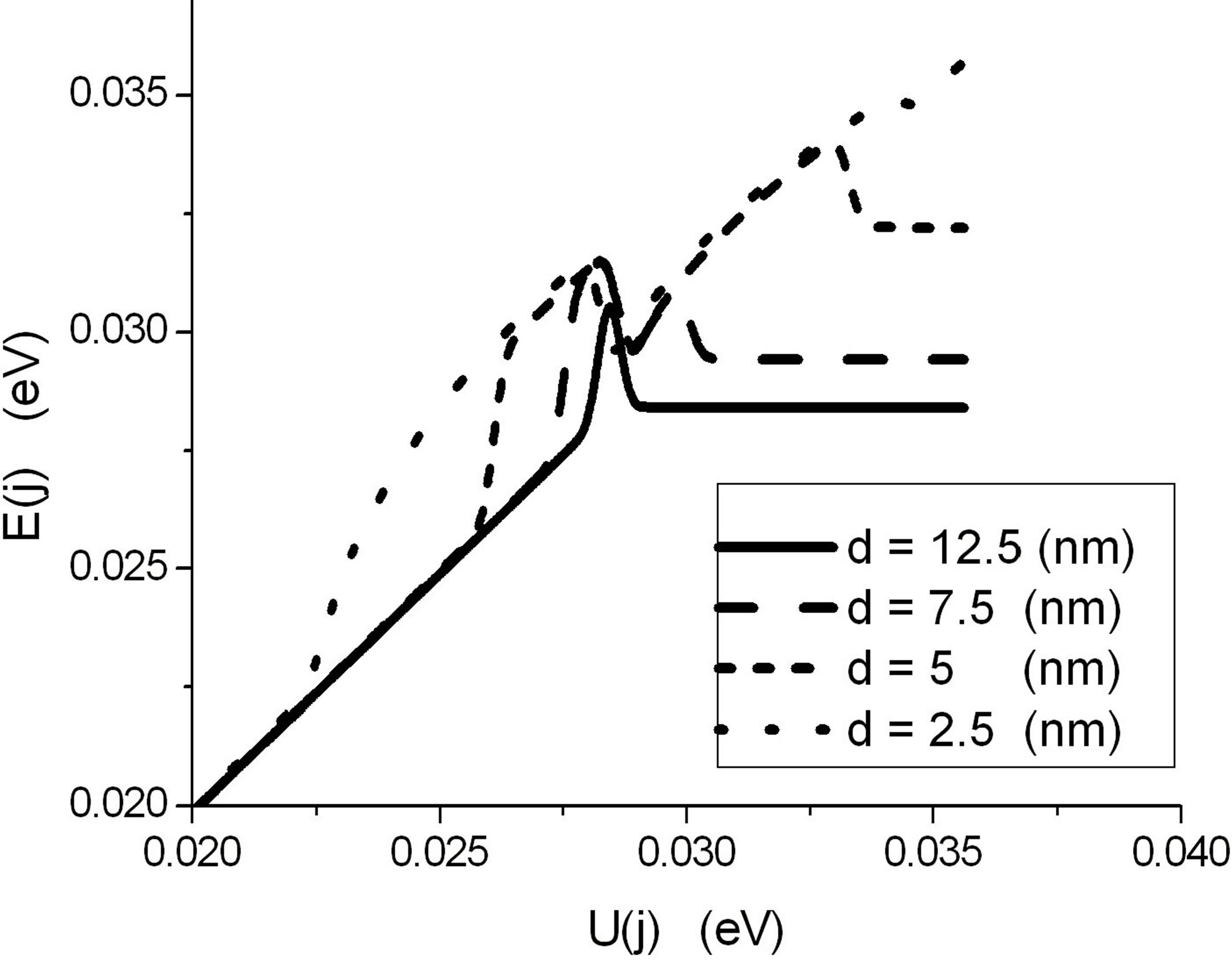
Figure 5. Electron ground state energy in the area of non monotony dependences for different width of unmagnetic layer.
be explained using our results.
• Figure 6 (taken from [1] for polarizations σ−) shows the decreasing of energy with increasing of field for strong fields, which takes place for any (from analyzed) width of unmagnetic layer for polarization σ− (corresponds to analyzed in this work decreasing of U1 with increasing of field).
• For small fields the areas of energy independence on
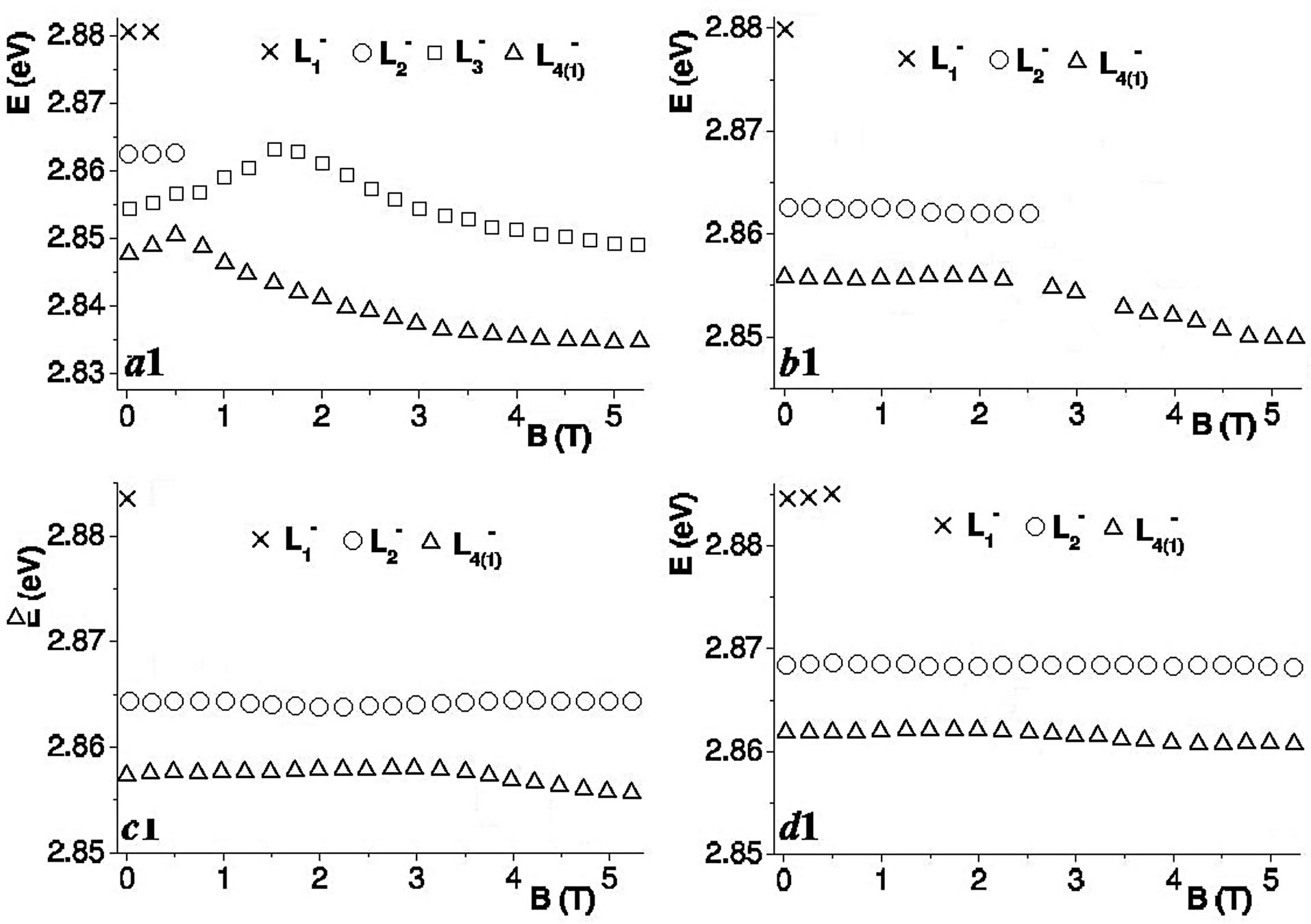
Figure 6. Magnetic field dependences of the energy positions of the Lorentz components for σ− polarizations taken from [1]; a1: at d = 0; b1: at d = 2.5 nm; c1: at d = 7.5 nm; d1: at d = 12.5 nm.
field are received in [1-3].
• Figure 6(a) denotes non monotony dependence of energy on field.
• In Figure 6, we see the decrease of energy (which does not depend on field) with increase of d.
• With increasing of d the independence of the energy on the magnetic field (horizontal line in Figure 5) takes place for larger magnetic fields.